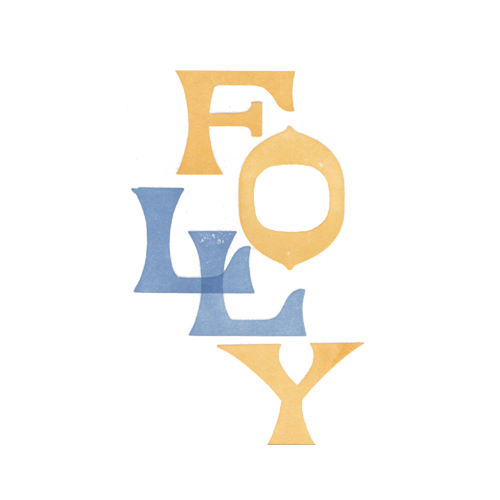Near the hamlet of Blackborough in Devon’s Blackdown Hills, remnants of the local Whetstone mining industry can be found in the woodland. A battered pile of stones could be assumed to be another relic, but the more curious visitor will be intrigued to discover that it is marked on old maps as ‘Garnsey’s Tower’.
Summerhouse
The Summerhouse, Yealand Conyers, Lancashire.
High above the village of Yealand Conyers in Lancashire could once be found this pretty little summerhouse. It was built to take advantage of the ‘extensive and picturesque views of the adjacent bay of Morecambe, and the bold and much admired Mountain Scenery of Cumberland and Westmorland’.
Haughmond Castle, Uffington, Shropshire
Sundorne House in Shropshire was the seat of the Corbet family and the estate included the picturesque ruin of Haughmond Abbey. In 1774 John Corbet added a dramatic eye-catcher to the ensemble – a sham castle on the summit of Haughmond Hill.
The Summerhouse, North Seaton Hall, Northumberland
North Seaton Hall stood in the hamlet of the same name, just inland from Newbiggin by the Sea on the Northumberland coast. The house and ancillary buildings were demolished in the 1960s, and the land developed for housing: only the road called ‘Summerhouse Lane’ gives a clue to a fascinating feature which once ornamented the grounds.
The Lookout, Henbury, Bristol
In a patch of scrubby woodland in a Bristol suburb stands this magnificent ecclesiastical eye-catcher. The centrepiece of the structure is the former west window of the Lord Mayor’s Chapel on College Green in Bristol, which was re-erected here when the chapel was restored in the 1820s.
Curiouser & Curiouser: a Folly in Frome, Somerset
Tucked in the corner of a garden in the town of Frome, Somerset, stands a little tower with a conical roof topped with a pineapple. This flamboyant finial, like the rest of the folly, is the work of the talented and resourceful Nigel Day: the uppermost leaves started life as a copper hot water cylinder.
A Musical Interlude
The Folly Flâneuse is away (in search of follies of course), so until next week here is a brief look at the very pretty Music Temple at West Wycombe in Buckinghamshire, the seat of the Dashwood family.

The temple, also known as the Theatre, was designed by Nicholas Revett in the late 1770s, and sits on the largest of the three islands on the lake. Sir Francis Dashwood’s guests would have been rowed over to the island for fêtes champêtres of food, wine and music.

The Music Temple is just one of the many garden features added to the West Wycombe landscape in the eighteenth century. Some are lost, but others have been restored, or indeed rebuilt, by later generations of the family.

In 1943 Sir John Dashwood gifted West Wycombe to the National Trust, but the house remains home to the Dashwood family. The house and grounds reopen in the spring https://www.nationaltrust.org.uk/west-wycombe-park-village-and-hill

There will be no lounging around for the Folly Flâneuse, who will be back next week.
APOLOGIES that there has been a glitch in the system and regular readers will receive two posts this week. If you have missed the other it is here https://thefollyflaneuse.com/bonds-folly-or-creech-grange-arch-dorset/
Lady Amabel and Landscape Ornament at The Grove, Hertfordshire
Lady Amabel Yorke was the elder daughter of Philip Yorke, 2nd Earl of Hardwicke, and his wife Jemima Campbell, 2nd Marchioness Grey, 4th Baroness Lucas. Their family seats were Wrest Park, Bedfordshire, and Wimpole Hall, Cambridgeshire, both of which had parks that were remodelled by Capability Brown with Amabel being privy to the design decisions. She was, then, rather well-informed on matters of landscape gardening, and her 37 volumes of diaries contain countless accounts of visits to the seats of her friends and family, where she sometimes notes follies and garden ornaments.
Penrith Beacon, Penrith, Cumbria
High on the fell above the town of Penrith stands a square stone turret which marks the site of the town’s ancient beacon. For centuries the beacon network provided an early warning system: fires burning on high ground announced the approach of the enemy. In less troubled times the little tower became a summerhouse, eye-catcher, and belvedere for the Lonsdale family of nearby Lowther Castle. Today it is a popular destination for walkers, and a symbol of the town.
The Old Castle, Conishead Priory, Cumbria
On a knoll in the former park of Conishead Priory, near Ulverston in Cumbria, (formerly Lancashire) stands this solitary tower. It was once part of a much larger folly, known as the Old Castle, which many took for a genuine ancient monument. Thomas Braddyll (1730-1776) erected it as an ornament to be seen from his seat at Conishead Priory.









